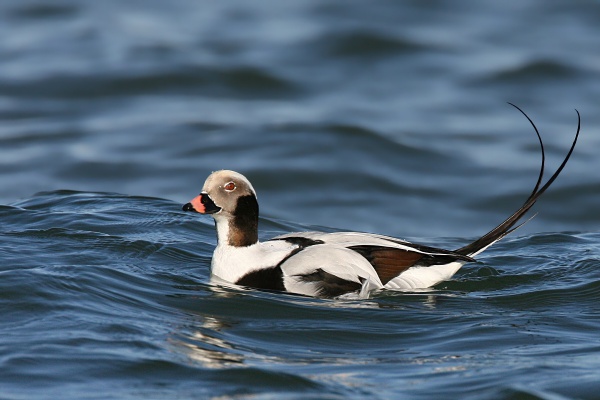Facts About Long-tailed duck
The long-tailed duck, once known in North America as the oldsquaw, is a fascinating medium-sized sea duck and the sole surviving member of the Clangula genus. Initially classified under Harelda, it later became the type species of its own genus. These ducks are particularly noteworthy for their striking appearance and unique behaviors.
Adult long-tailed ducks have white underparts and undergo a complex molting process. The males are especially distinctive, featuring long, pointed tails and dark grey bills accented by a pink band. In winter, males develop a dark cheek patch on an otherwise predominantly white head and neck. Females, in contrast, have a brown back and a shorter tail. One of the most endearing aspects of this species is its vocal yodeling call, which contributes a melodic quality to their presence.
These ducks breed in a variety of cold habitats, including tundra pools, marshes, sea coasts, and mountain lakes across the North Atlantic, Alaska, northern Canada, Europe, and Russia. As the seasons change, they migrate to winter along the coasts of North America, the Great Lakes, northern Europe, Asia, and the Baltic Sea. Known for their social disposition, long-tailed ducks often form large flocks during the winter and migration periods.
When it comes to feeding, long-tailed ducks are expert divers, capable of plunging up to 60 meters to hunt for mollusks, crustaceans, and small fish. Unlike many other ducks, they use their wings to dive, enabling them to reach impressive depths.
In North America, the name "oldsquaw" was dropped due to its negative connotations, and "long-tailed duck" was officially adopted to match global English usage. The scientific name of the species, derived from Latin, means "to resound" and "of winter" reflecting both their vocal nature and their cold-weather habitats.
The long-tailed duck is also recognized under the Agreement on the Conservation of African-Eurasian Migratory Waterbirds (AEWA), underscoring its significance and the efforts dedicated to ensuring its conservation.

 Serbia
Serbia